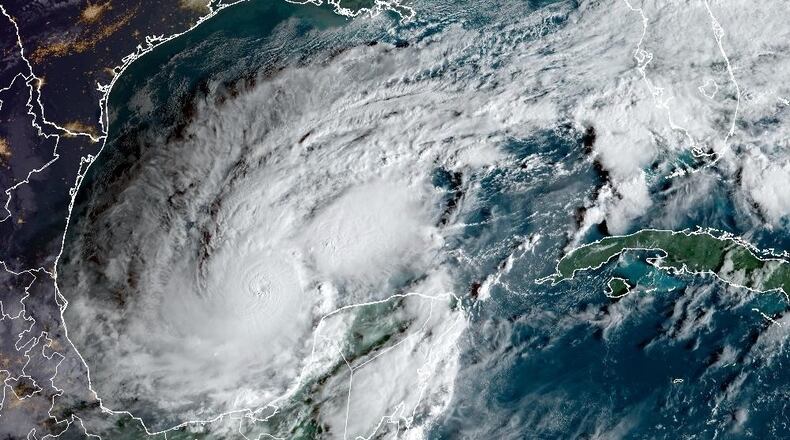Less than a year after Hurricane Helene caused historic damage in Georgia and other Southeastern states, the federal government said Thursday that conditions are ripe once again for another active hurricane season.
The National Oceanic and Atmospheric Administration forecast the upcoming hurricane season, which begins June 1 and lasts through Nov. 30, will produce 13 to 19 named storms. The agency predicts that between six and 10 of those storms will become hurricanes, with three to five growing into major hurricanes with sustained winds greater than 111 mph.
The expected tropical activity would be above the average of 14 named storms and three major hurricanes — considered to be Category 3 or above — observed between 1991 and 2020.
“Everything’s in place for an above-average season,” Ken Graham, the director of NOAA‘s National Weather Service, said at an event Thursday in Louisiana to announce the forecast.
Credit: Miguel Martinez-Jimenez
Credit: Miguel Martinez-Jimenez
Key federal agencies that track and respond to hurricanes, meanwhile, are grappling with deep staffing cuts exacted by President Donald Trump’s administration and the Department of Government Efficiency.
NOAA‘s forecast is in line with other predictions for the upcoming season.
Last month, a group of researchers from Colorado State University predicted the Atlantic Basin would produce an above-average 17 named storms this season. Of those, CSU forecast nine would grow into hurricanes, with four reaching major hurricane status.
NOAA researchers said their forecast was driven by several factors.
Among them is the presence of exceptionally hot temperatures in the tropical regions of the Atlantic Ocean, where most hurricanes form. Those bathlike waters are expected to remain for the foreseeable future — and research has shown human-caused climate change is largely to blame.
Water temperatures in the tropical Pacific Ocean, which influence hurricane formation in the Atlantic, are also likely to remain favorable for hurricane development.
NOAA forecasters also predicted an active monsoon season in West Africa, which could also help whip up storms in the Atlantic. Disturbances that spin off Africa have historically become some of the basin’s strongest and longest-lived hurricanes.
Climate change is also increasing the destructive potential of storms, research shows. And Hurricane Helene, which slammed Georgia last fall and was likely the most damaging storm in state history, exhibited many of the symptoms.
Rising temperatures enable more storms to undergo “rapid intensification,” a swift increase in a storm’s wind speed, according to NOAA research. Last year, Hurricane Helene’s winds increased by 55 mph in just 24 hours as it approached Florida‘s Big Bend region. The stronger a storm is at landfall, the more likely it is to maintain damaging winds and rain far inland.
“These storms are stronger, so it takes them longer to wind down,” said Marshall Shepherd, the director of the University of Georgia‘s Atmospheric Sciences Program
Higher temperatures also produce “wetter” storms, increasing the odds of extreme rainfall and devastating floods. Helene dropped record-breaking precipitation on Atlanta, then dumped even more eye-popping rainfall totals as it crossed the Appalachian Mountains.
Credit: TNS
Credit: TNS
Helene caused an estimated $5.5 billion in damage to Georgia‘s agriculture and forestry industries, the biggest sector of the Peach State’s economy, according to UGA. Helene, which also devastated Florida, the Carolinas and parts of Tennessee, was the seventh-costliest tropical storm to strike the U.S. since 1980 and has been blamed for at least 219 deaths.
Days away from the official start of hurricane season, many Georgians are still rebuilding.
The cost-cutting effort led by Trump ally and Tesla CEO Elon Musk, meanwhile, has shrunk NOAA‘s workforce by about one-fifth, according to The New York Times. That includes the loss of hundreds of staff at the National Weather Service, cuts that have left some offices unable to maintain their standard 24/7 coverage.
The Federal Emergency Management Agency, which runs point in the immediate aftermath of disasters, has also lost about a quarter of its employees, The New York Times reports.
Retired U.S. Navy Rear Admiral Tim Gallaudet, who served as acting NOAA administrator during Trump’s first term, said he worries the cuts will diminish the agency’s forecasting abilities.
“This is putting our accuracy at risk, and that means people are going to get less lead time for warnings or maybe even incorrect information,” Gallaudet said in an interview with The Atlanta Journal-Constitution.
Federal officials faced several questions from press gathered in-person and online Thursday about the staff reductions. NOAA chief of staff Laura Grimm insisted the agency is prepared for the upcoming season.
“We are fully staffed at the hurricane center and we are definitely ready to go,” Grimm said.
As the country gets set to enter hurricane season, UGA‘s Shepherd stressed that its important to pay close attention to forecasts for your area.
“We kind of focus on how active the season will be as a whole, but I always like to remind people that it only takes one storm to be a devastating and memorable event,” he said.
A note of disclosure
This coverage is supported by a partnership with Green South Foundation and Journalism Funding Partners. You can learn more and support our climate reporting by donating at ajc.com/donate/climate.
About the Author
Keep Reading
The Latest
Featured




